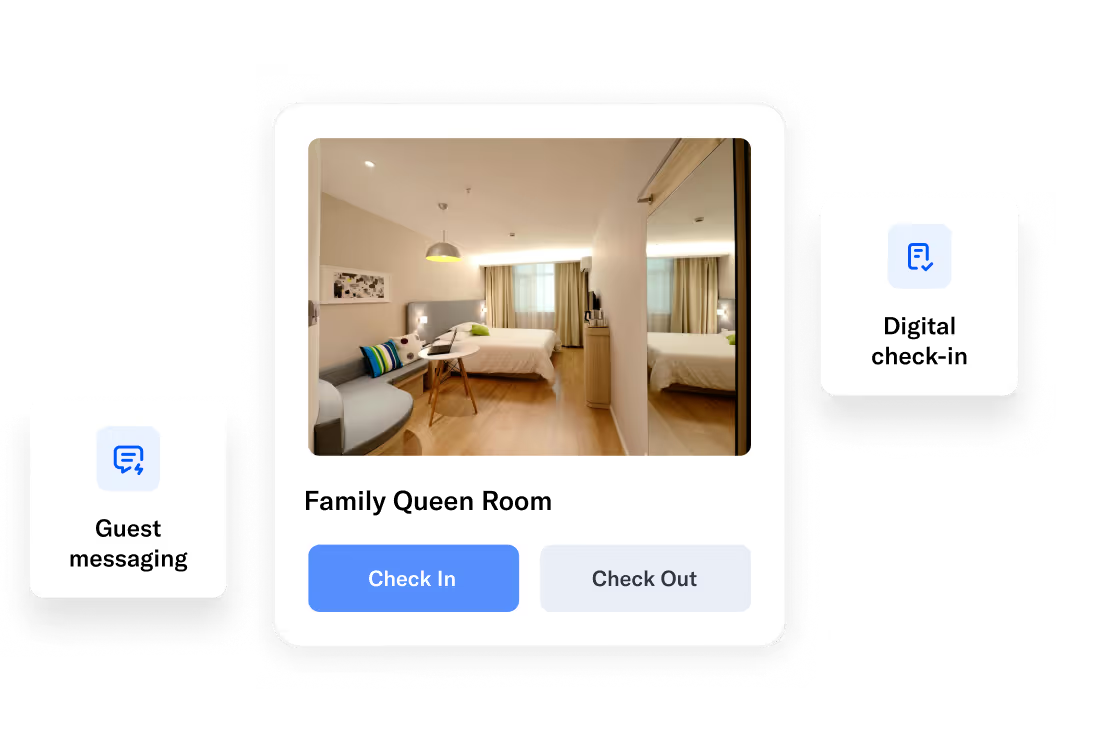Table of Contents
Join Thousands of Hotels Thriving with roommaster
The transition to roommaster is straightforward and efficient. Our implementation team handles data migration including reservations, guest profiles, and historical information.

Did you know that a single star difference in your hotel rating can impact revenue by up to 25%? Yet many hoteliers struggle to understand exactly what drives these influential ratings and how to leverage them for operational excellence.
Hotel star ratings serve as your property’s calling card in a highly competitive industry. Whether you operate a budget-friendly establishment or a luxury resort, understanding the nuances of star classifications can dramatically influence your bottom line, guest expectations, and operational strategies.

Star rating systems have evolved from simple classifications to very complete evaluation frameworks that assess hundreds of criteria. Unlike the early days when basic amenities determined classifications, today’s systems evaluate everything from digital infrastructure to sustainability practices.
Rating systems vary significantly across regions:
Understanding these regional differences becomes crucial when operating in different markets or targeting international travelers whose expectations may be shaped by their home country’s standards.

1-star properties offer:
These properties focus on providing clean, safe accommodations at the lowest price point.
2-star properties typically include:
These establishments offer reliable basics without premium services.
The 3-star category introduces:
This category represents the industry’s middle ground, balancing comfort with value.
4-star properties deliver:
These establishments focus on delivering exceptional guest experiences with personalized service.
The pinnacle 5-star classification demands:
These properties set the standard for luxury accommodations worldwide.

Your hotel’s star rating significantly influences multiple aspects of your business operations and performance.
Star ratings create natural pricing parameters:
For revenue managers, understanding these parameters becomes essential for optimal rate setting.
Different star ratings perform optimally on different booking channels:
Understanding these dynamics allows for more strategic channel management decisions and better allocation of marketing resources.
{{channel-manager-one}}
Each star level requires specific operational benchmarks:
These requirements directly impact operational budgets and hiring strategies. Properties transitioning between star categories often underestimate the operational adjustments required to consistently deliver at their new classification level.

Elevating your property’s star rating requires a methodical approach to operational improvements that directly address rating criteria:
Strategic technology investments can meaningfully impact star ratings while simultaneously improving operational efficiency:
Forward-thinking hoteliers view these technologies not as expenses but as investments that directly support higher ratings and enable premium pricing strategies.
{{pms-two}}
Staff capabilities have a direct impact on rating evaluations across all classification systems:
The most successful properties integrate rating criteria directly into performance evaluations, creating accountability for classification outcomes at all staffing levels.
While physical facilities significantly impact ratings, strategic investments yield better returns than broad renovations:
The most effective approach involves analyzing which specific facility investments will most directly address your property’s rating limitations while simultaneously enhancing guest satisfaction.
Food and beverage offerings significantly influence star ratings, particularly at the 4 and 5-star levels:
Properties transitioning from 3 to 4 stars often find that modest investments in F&B presentation and service protocols yield substantial rating improvements.
Systematic approach to guest feedback provides a roadmap for targeted rating improvements:
The most sophisticated properties maintain feedback databases that allow for longitudinal analysis of performance trends against specific rating requirements.
Star rating systems continually evolve to reflect changing guest expectations and industry trends. Properties must stay ahead of these shifts to maintain or improve ratings.
Environmental practices increasingly influence ratings:
Many rating systems now include specific sustainability criteria that can impact overall classifications.
Online capabilities now factor into ratings:
Today, inadequate bandwidth or connection stability for example, can directly lower your star rating regardless of your physical facilities.
{{guest-app}}
Inclusive accommodations are becoming mandatory
Rating organizations increasingly evaluate how comprehensively properties address diverse accessibility requirements.
Hotel star ratings represent far more than simple classifications: they establish fundamental parameters for your business model, pricing strategy, and operational requirements. The most successful properties approach ratings strategically, making targeted investments that maximize their classification potential while aligning with their broader business goals.
Rather than attempting to achieve the highest possible rating, strategic hoteliers identify the optimal classification for their specific market position and guest expectations. They then implement the operational systems, staff training, and facility investments needed to consistently deliver at that level.
By combining this strategic approach with the right technological infrastructure, properties can achieve the ideal balance between rating excellence and operational efficiency, turning star classifications from simple designations into powerful business advantages.
No, star rating systems vary significantly between countries and regions. Europe has the most standardized approach with the Hotelstars Union, while the US relies primarily on private organizations like AAA and Forbes.
In some countries, yes. However, most reputable booking platforms verify ratings, and misrepresenting your classification can result in significant guest dissatisfaction and complaints.
Most formal rating systems conduct reassessments every 1-3 years, though this varies by organization. Some systems also conduct surprise inspections between formal evaluations.
Traditionally, no. However, some newer rating systems incorporate guest feedback as a component of their evaluation. Additionally, significant discrepancies between official ratings and guest perceptions may trigger reassessment.
While specific criteria vary by system, the key differences typically include: staff-to-guest ratios, personalization capabilities, facility quality, range of services, and the consistency of luxury offerings throughout the property.
Integrated technology systems help ensure consistent service delivery, maintenance standards, and guest recognition, all critical rating factors. Modern hotel PMS solutions like roommaster connect operations across departments, helping properties deliver higher service levels more efficiently.
The distinction between 2-star and 3-star properties centers primarily on amenities, service levels, and facility quality. A 2-star hotel typically offers clean, basic accommodations with limited amenities: private bathrooms, television, and perhaps a simple continental breakfast. These properties focus on providing essential services at economical prices.
A 3-star hotel represents a significant step up in both comfort and service. These properties generally offer larger rooms with more furnishings, an on-site restaurant with full meal service, meeting facilities, fitness centers (even if basic), and expanded front desk hours with more comprehensive service options.
This question isn’t about which is objectively “better” but rather which better suits your specific needs, expectations, and budget. The “better” choice depends entirely on the purpose of your stay, your budget constraints, and how much importance you place on the accommodation experience itself versus other aspects of your trip.
Distinguishing between 4-star and 5-star properties requires attention to several key areas:
Officially, there is no such thing as a 7-star rating in any formal hotel classification system. The term gained prominence when media described the Burj Al Arab in Dubai as a “7-star hotel” upon its opening in 1999. Since then, a small number of properties have adopted this unofficial designation, including Pangu Hotel in Beijing, Town House Galleria in Milan, and Emirates Palace in Abu Dhabi.
{{cta-strip}}



The transition to roommaster is straightforward and efficient. Our implementation team handles data migration including reservations, guest profiles, and historical information.
See how roommaster's unified platform can work for your property. Our team will walk you through features tailored to your specific needs and operations.